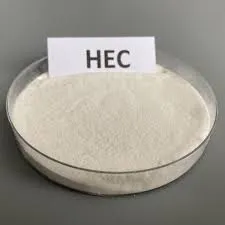
Oct . 22, 2024 09:09 Back to list
Understanding the Meaning of HPMC and Its Common Applications
Understanding HPMC What It Stands For and Its Significance
HPMC stands for Hydroxypropyl Methylcellulose, a versatile compound that plays a crucial role across various industries, including pharmaceuticals, food, cosmetics, and construction. As a non-ionic, water-soluble polymer derived from cellulose, HPMC is known for its unique properties, making it an invaluable ingredient in numerous applications.
The Chemical Structure of HPMC
HPMC is synthesized by reacting cellulose with propylene oxide and methyl chloride. The result is a polymer with both hydrophilic (water-attracting) and hydrophobic (water-repelling) characteristics. This dual nature is fundamental to its functionality. The hydroxypropyl groups increase the solubility of cellulose, allowing it to dissolve in cold water and produce a viscous solution. The methyl groups enhance the overall stability and performance of the compound.
Applications of HPMC
1. Pharmaceuticals In the pharmaceutical industry, HPMC is widely used as a binder, coating agent, and controlled-release polymer. Its ability to form gels makes it ideal for tablet formulations, ensuring that the active ingredients are released uniformly. Furthermore, HPMC serves as a stabilizer in liquid formulations, ensuring that components do not separate over time.
2. Food Industry HPMC is an excellent emulsifier, thickener, and stabilizer in food products. It improves the texture and mouthfeel of various food items, such as sauces, salad dressings, and baked goods. Its use in gluten-free recipes is particularly noteworthy, as it mimics the properties of gluten, providing elasticity and structure to doughs.
what does hpmc stand for

3. Cosmetics and Personal Care In cosmetics, HPMC functions as a thickening agent, ensuring product consistency. It is found in a variety of products, including lotions, creams, and hair care items. Its ability to form a film on the skin enables controlled moisture release, enhancing hydration and promoting skin health.
4. Construction HPMC is a vital component in construction materials, especially in cement-based products. It provides improved workability, reduces water loss, and enhances the adhesion of tiles and plasters. Moreover, it helps in delaying the setting time of mortars, which is crucial for ensuring adequate working time during construction processes.
Benefits of HPMC
One of the primary advantages of HPMC is its compatibility with various ingredients. It is non-toxic and hypoallergenic, making it suitable for use in personal care products and food. Additionally, HPMC is stable across a wide pH range, ensuring its effectiveness in diverse chemical environments.
Another significant benefit is its ability to provide controlled release in drug formulations. This capability is particularly important for medications that require a steady release of active ingredients over an extended period, leading to enhanced patient compliance and improved therapeutic outcomes.
Conclusion
In conclusion, HPMC, or Hydroxypropyl Methylcellulose, is a multifaceted compound with a broad spectrum of applications spanning several industries. Its chemical properties enable it to serve vital roles in pharmaceuticals, food, cosmetics, and construction, making it an essential ingredient. As industries strive for innovation and efficiency, the importance of HPMC in product formulation and production processes cannot be overstated. Understanding what HPMC stands for and its implications helps appreciate its significance in everyday products we often take for granted. Whether in the medications we take or the food we consume, HPMC quietly contributes to enhancing quality and performance, making our lives a little better every day.
-
Versatile Hpmc Uses in Different Industries
NewsJun.19,2025
-
Redispersible Powder's Role in Enhancing Durability of Construction Products
NewsJun.19,2025
-
Hydroxyethyl Cellulose Applications Driving Green Industrial Processes
NewsJun.19,2025
-
Exploring Different Redispersible Polymer Powder
NewsJun.19,2025
-
Choosing the Right Mortar Bonding Agent
NewsJun.19,2025
-
Applications and Significance of China Hpmc in Modern Industries
NewsJun.19,2025







